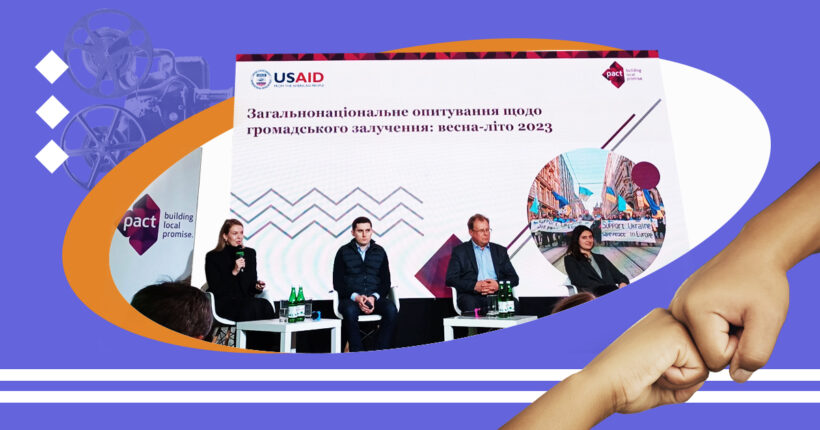
What is the problem?
53% of citizens residing in Ukraine for the long term and without recent relocations actively engage in their community's life and activities. This is a promising statistic, Oleksandra Kolotukha, the senior communications manager of the "Join!" Public Activity Promotion Program, notes.
However, the situation is worse for internally displaced Ukrainians. Only 28% of them were actively involved in their new or temporary communities. This information comes from a nationwide survey on public participation conducted by experts from the "Join!" program during the spring and summer of this year. A total of 2017 people participated in the survey.
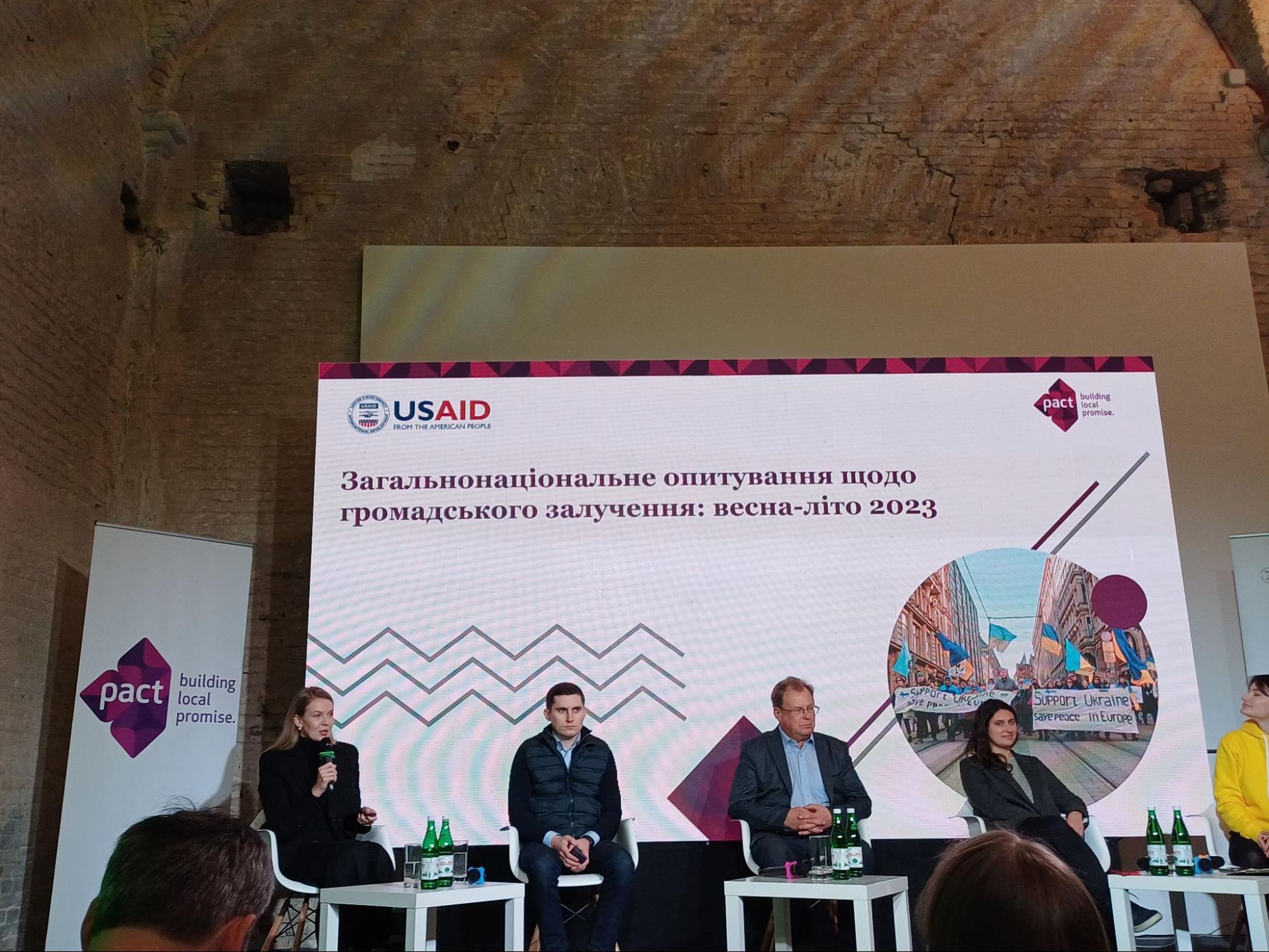
In the photo from left to right, the senior communications manager of the "Join!" Program Oleksandra Kolotukha, executive director of the "Institute of Analytics and Advocacy" Yuriy Romashko, head of the Khmeliv community in the Sumy region Petro Panchenko, head of the NGO "Ukrainian Antiquity" Nataliia Pishchulina and moderator of the "Join!" program specialist Valeriia Ovcharova / Photo by the author
According to Oleksandra Kolotukha, a lack of interest or time is not a significant obstacle for citizens. However, the downside is that some people are unsure of how to get involved in community life, with 12% of permanent residents and 25% of IDPs facing this issue.
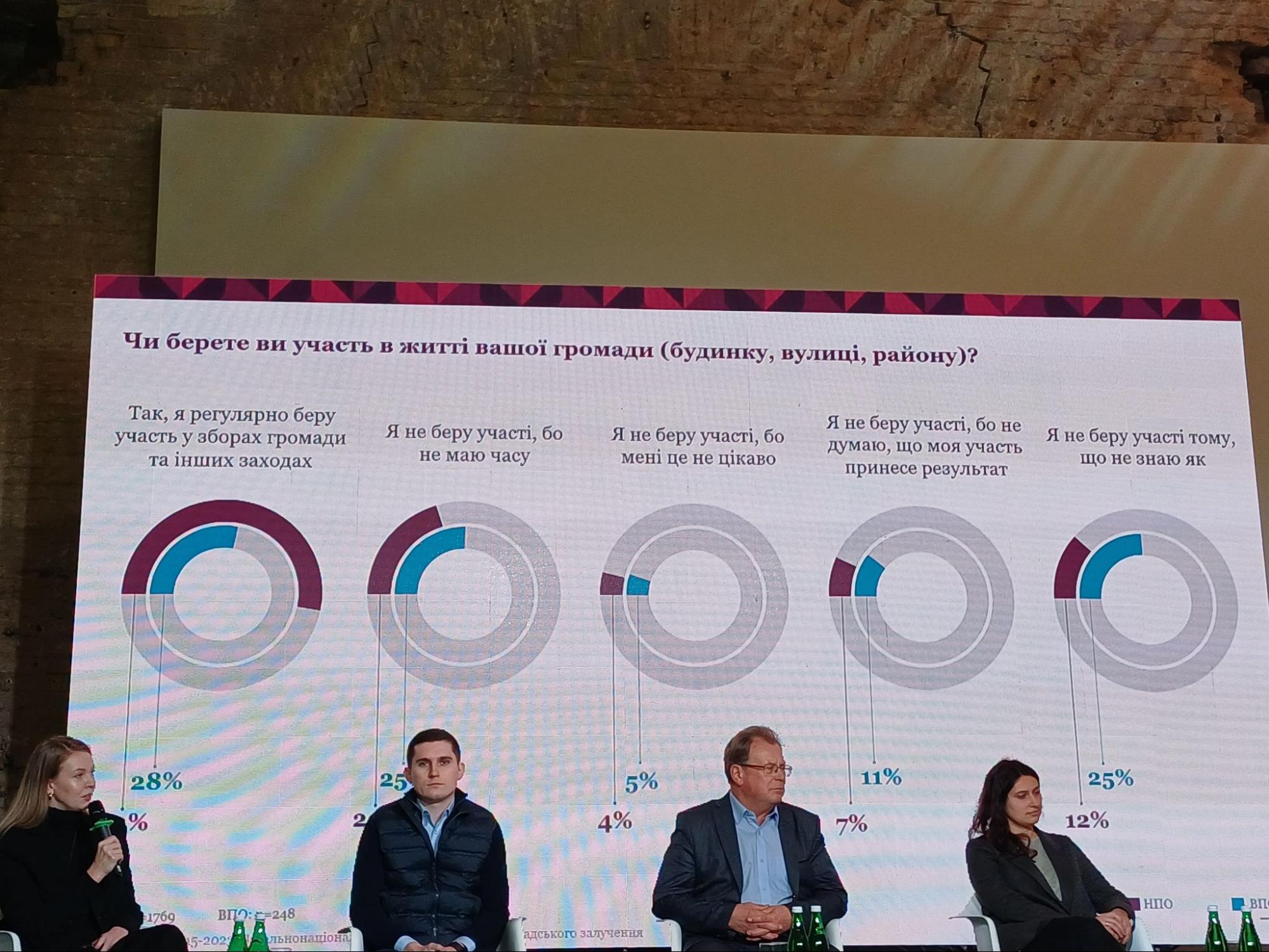
In the picture: During the presentation of the research findings, the responses from permanent community residents are denoted in purple, while those from IDPs are shown in blue – Photo credit: author.
Last year, the participation of citizens in civil society organizations was lower, with only 35% of permanent residents and 29% of IDPs involved.
Non-participation in public life is becoming a prevalent issue due to gaps in knowledge, particularly among IDPs, according to Oleksandra Kolotukha.
Simultaneously, citizens are well-informed about diverse ways of engaging in democracy but do not actively participate.
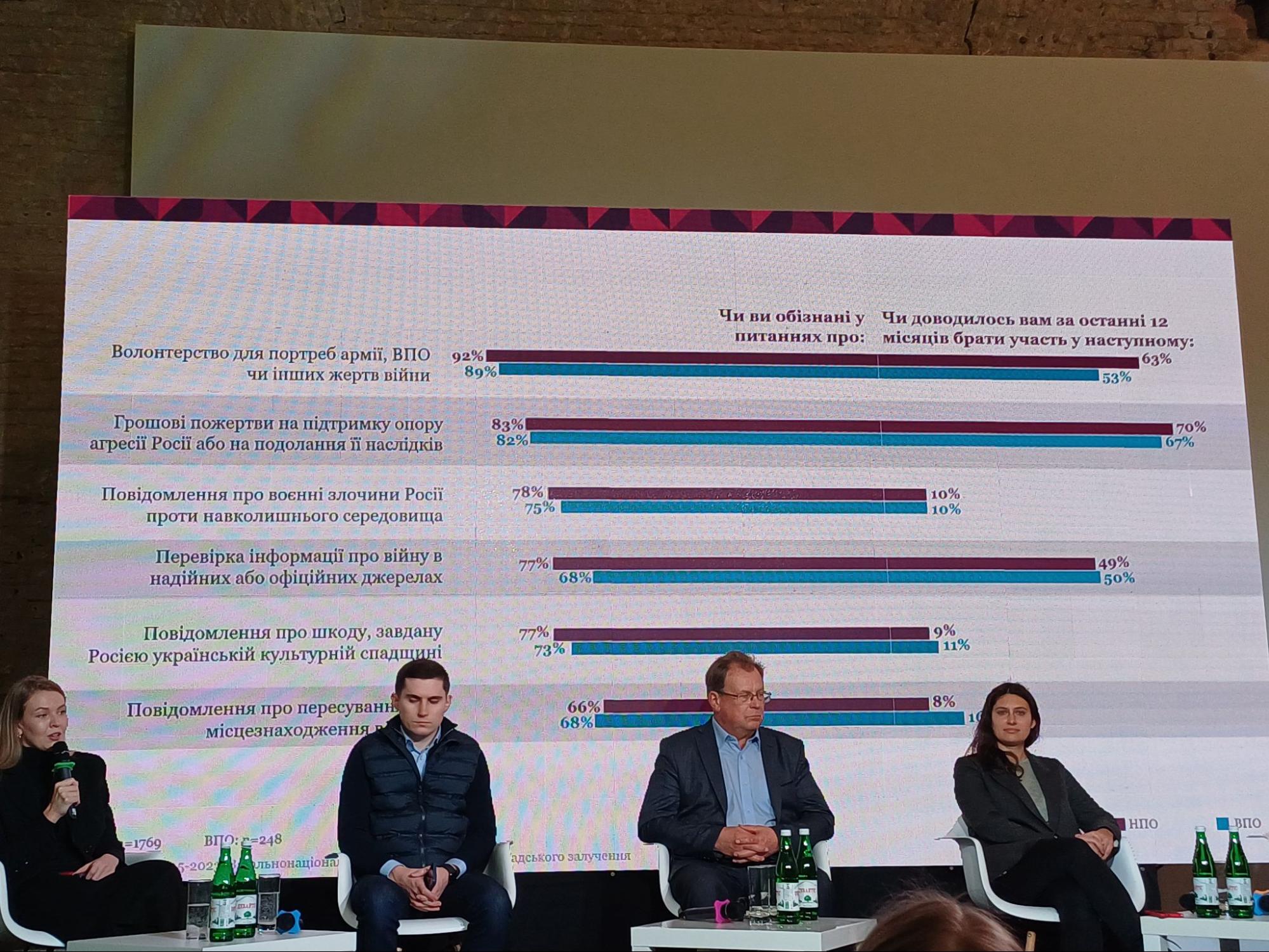
This photo features Oleksandra Kolotukha (on the far left) presenting the findings of a sociological study at the 12th Civil Society Development Forum titled "What Will Give Us Strength." / Photo credit: author.
The good news is that most of the long-term residents in the communities and those displaced participate in the fight against the aggressor. People actively volunteer, donate money to support the army, and assist IDPs and veterans.

In the picture: Residents and internally displaced persons shared similar reasons for not participating in community events: limited availability, poor health status, and work commitments. / Photo taken by the author.
Oleksandra Kolotukha reported that 19% of long-term community residents and 17% of new residents expressed concern about their physical health impacting their ability to participate in community life. These concerns are especially prevalent among women.
According to Natalia Pishchulina, the leader of the NGO "Ukrainian Antiquity," another issue is the reluctance of community authorities, public groups, and businesses to collaborate in shared efforts in certain communities.
According to Nataliia Malynovska, a project manager at the "Respublika" Institute, involving these groups in community reconstruction is unfortunately not very common at the moment.
Nataliia reports that there's a current debate regarding who should be considered part of the "vulnerable groups" as the population of veterans, individuals with disabilities, single mothers, and others is increasing in Ukraine.
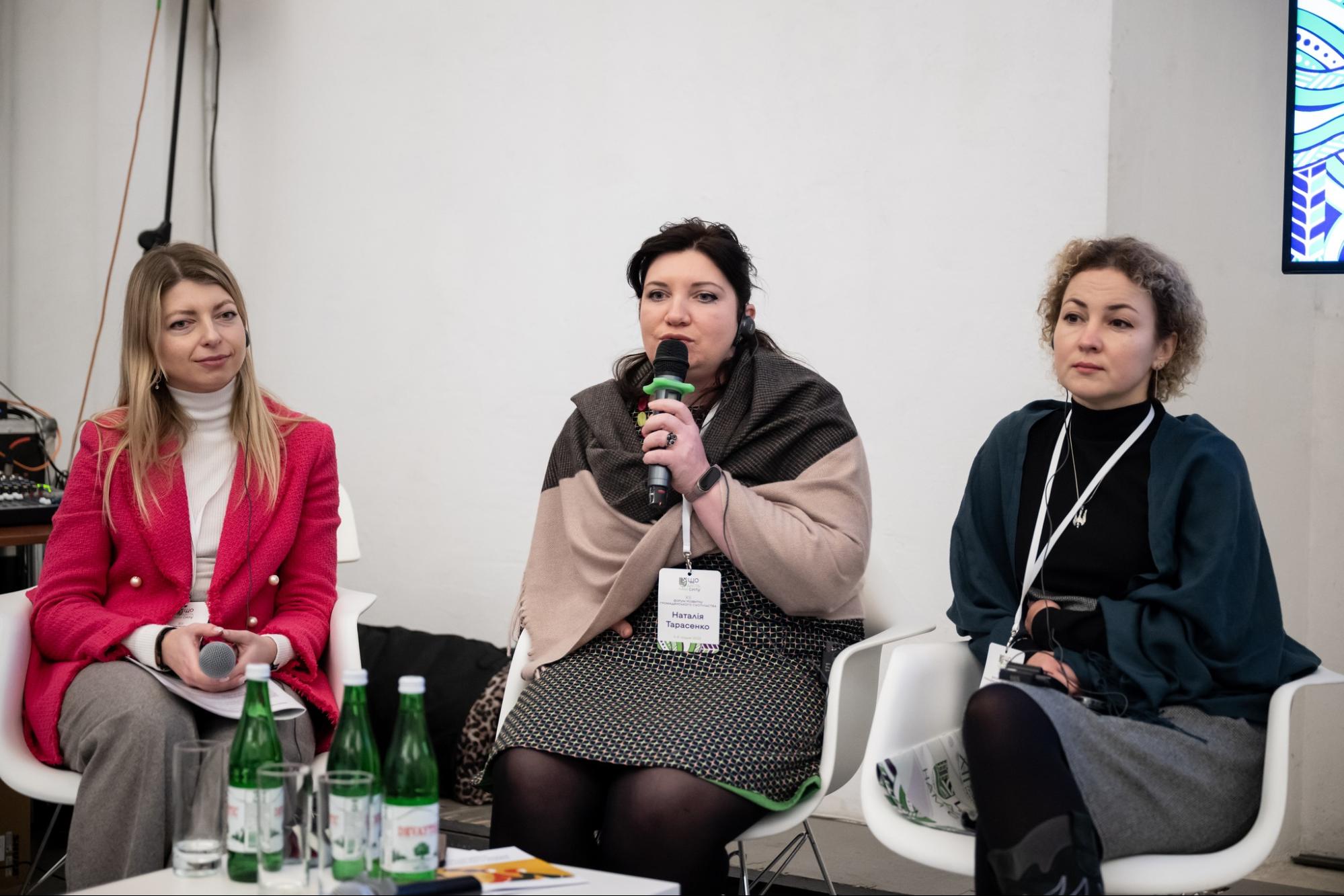
In the picture, we can see (from left to right) Nataliia Malynovska, the workshop moderator; Nataliia Tarasenko, the gender expert; and Liudmyla Chernenko, the PTSD prevention and correction instructor for war veterans. This photo was taken by the organizers of the Isar Ednannia forum's Facebook page.
"We need to consider the ongoing restructuring of society," remarks Nataliia Malynovska. "One major obstacle is dealing with local politicians. While changes are happening on a national level, it is much more challenging to implement them in community settings. This is influenced by the community's financial resources, internal documents, and the various regulations being developed or already in place. As a result, our policy is quite diverse."
What is the solution?
During the discussion panel on restoration and reconstruction, the participants reached a consensus on motivating citizens to be proactive through cooperation, taking action, and education.
The senior communications manager of the "Join" program, Oleksandra Kolotukha, along with Yuriy Romashko, the executive director of the "Institute of Analytics and Advocacy," Petro Panchenko, the head of the Khmeliv community in the Sumy region, and Nataliia Pishchulina, the head of the NGO "Ukrainian Antiquity," each provided examples of how it operates or has the potential to do so.
How does it work?
Unite around common priorities
According to a recent sociological study, Ukrainian citizens share similar post-war reconstruction goals, as observed by Oleksandra Kolotukha. These include addressing societal and economic concerns such as economic recovery and job creation, as well as rebuilding infrastructure and combatting corruption.

In the photo: The results of the study, which show the priorities of reconstruction for citizens at the personal and national levels / Photo by the author
Oleksandra Kolotukha summarizes the research findings, stating that individuals are prepared to participate in the reconstruction efforts. Specifically, there is a willingness to provide financial backing for programs that aid those affected by the war, help restore the natural surroundings, and rebuild vital infrastructure.
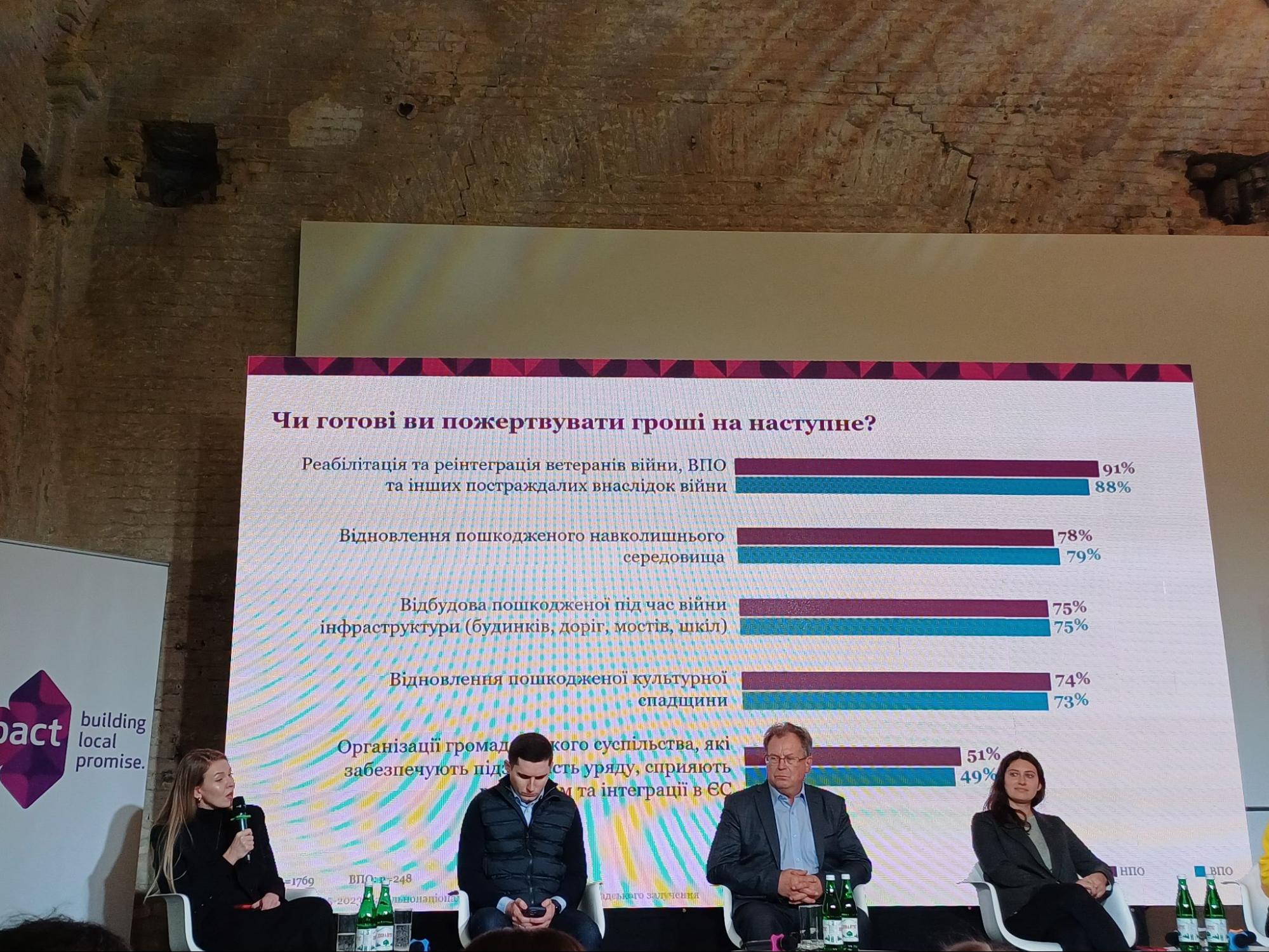
In the photo: The results of the study, which show the willingness of citizens to donate for various purposes / Photo by the author
Meanwhile, Nataliia Pishchulina, the leader of the NGO "Ukrainian Antiquity," emphasizes that various communities, even in the same region, have unique experiences. Therefore, it's crucial to establish an exchange of information and successful practices among them.
Speaking the same language and having a shared conceptual understanding is crucial. In today's world, there are numerous interpretations of the terms "restoration" and "public involvement," as noted by Nataliia.
How to inform about existing initiatives
Nurture digital maturity
Yuriy Romashko, executive director of the Institute of Analytics and Advocacy, shared that their organization helps the communities of Sumy, Kharkiv, and Chernihiv regions submit their projects to the DREAM system.

In the photo from left to right: Oleksandra Kolotukha, Yuriy Romashko, and Petro Panchenko / Photo by the author
He emphasized that this system should serve as a comprehensive solution for both accountability and fundraising and promote public oversight and electronic democracy. This means citizens, executors, regulatory bodies, and potential donors will have access to all the information about restoration projects uploaded onto the community and regional system.
Yuriy Romashko emphasized: "Reconstruction is ongoing here and now, facing the biggest challenges are on the ground. Ensuring high-quality project preparation, effectively communicating with investors, and boosting investment appeal are challenges faced by many communities. Leveraging digital solutions can greatly aid in this regard. However, at the regional level, digital readiness remains a significant hurdle. My advice to all is this: if your organization has the capability, you should offer your assistance to communities with specific digital solutions."
Interact with people directly
In small towns, the tried and true methods are effective: face-to-face interactions and gatherings. Digital solutions may not be suitable for everyone there just yet.
This point was emphasized by both Oleksandr Kolotukha and Oleksandr Solontai, the director of practical policy programs at the Institute of Political Education. They joined the discussion from the audience.
Petro Panchenko, the head of the Khmeliv community, also noted this.
"As the women chatted in the store, one proudly exclaimed, "I even knit socks for the Armed Forces!" This news quickly spread throughout the village, so the whole gathering has already shown up. Some people are making salads, while others are assisting in other ways," the village head gave an example. "This also serves as a valuable lesson, teaching even those in remote villages that their actions can make a meaningful difference. Such is the wisdom shared among grown adults, wise elders, and curious young minds."
He remembered how the community came together to face a shared problem when a full-blown invasion occurred. Without any instructions, residents took it upon themselves to patrol the streets and gather information on the movement of Russian equipment, which they then relayed as needed.
"We've been working to maintain the right atmosphere up until today so that everyone in the community is aware that their opinions are valued," Petro Panchenko states.
The case of the Khmeliv community: "A local deputy is a public figure"
In the Khmeliv community, during a village council meeting, it was decided to assist individuals from neighboring settlements who lost their residences. These families were relocated to the community, and those with three or more young children were provided with housing at the community's expense. As a result, the community grew by over 100 children in just six months. Additionally, each child received financial support. Currently, efforts are being made to purchase communal housing for these families.
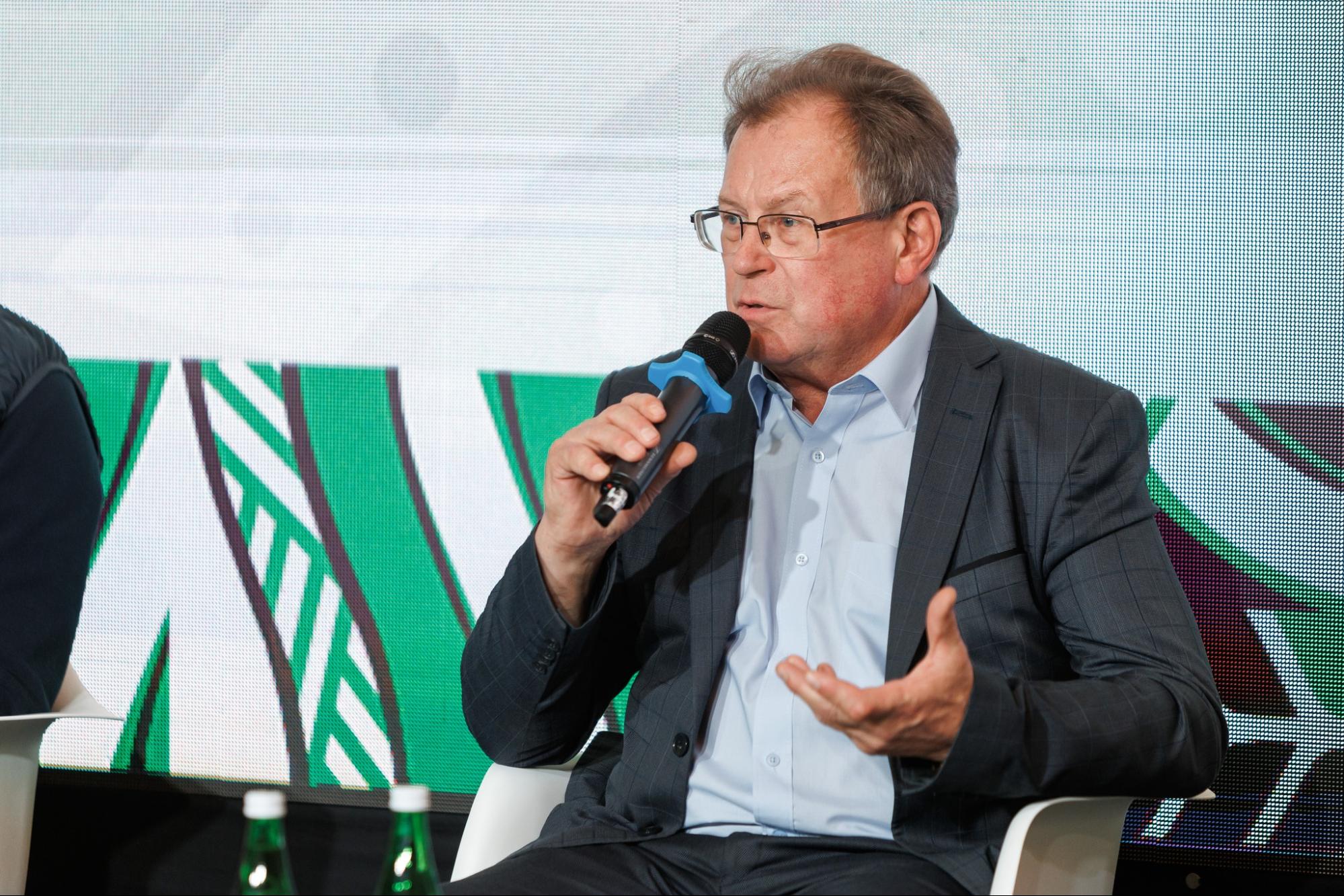
In the photo: Head of the Khmeliv community Petro Panchenko / Photo from the Facebook page of the organizers of the Isar Ednannia forum
According to Petro Panchenko, there has been a recent development in the community. Instead of renewing the lease on 220 hectares of land for one farmer, they have cultivated it through a communal enterprise. The village leader admits they are still in the initial stages of this undertaking, facing the first obstacles. However, the community members are urging the authorities to act further. One idea that has been proposed is the establishment of a feed mill and pig farm.
As Oleksandr Solontai noted, in such small communities as Khmeliv, there is no great distance between local self-government and the public.
"There, a local deputy is considered a public figure," explains Oleksandr Solontai.
Why is a vision for recovery a concern for leaders?
However, there are also instances in other communities where, for example, the village leaders themselves impede the dissemination of information to the community's residents regarding certain initiatives.
"The funniest answer was: 'Did you and the head of the regional state administration agree on this?'" Oleksandr Solontai gave an example from his own experience.
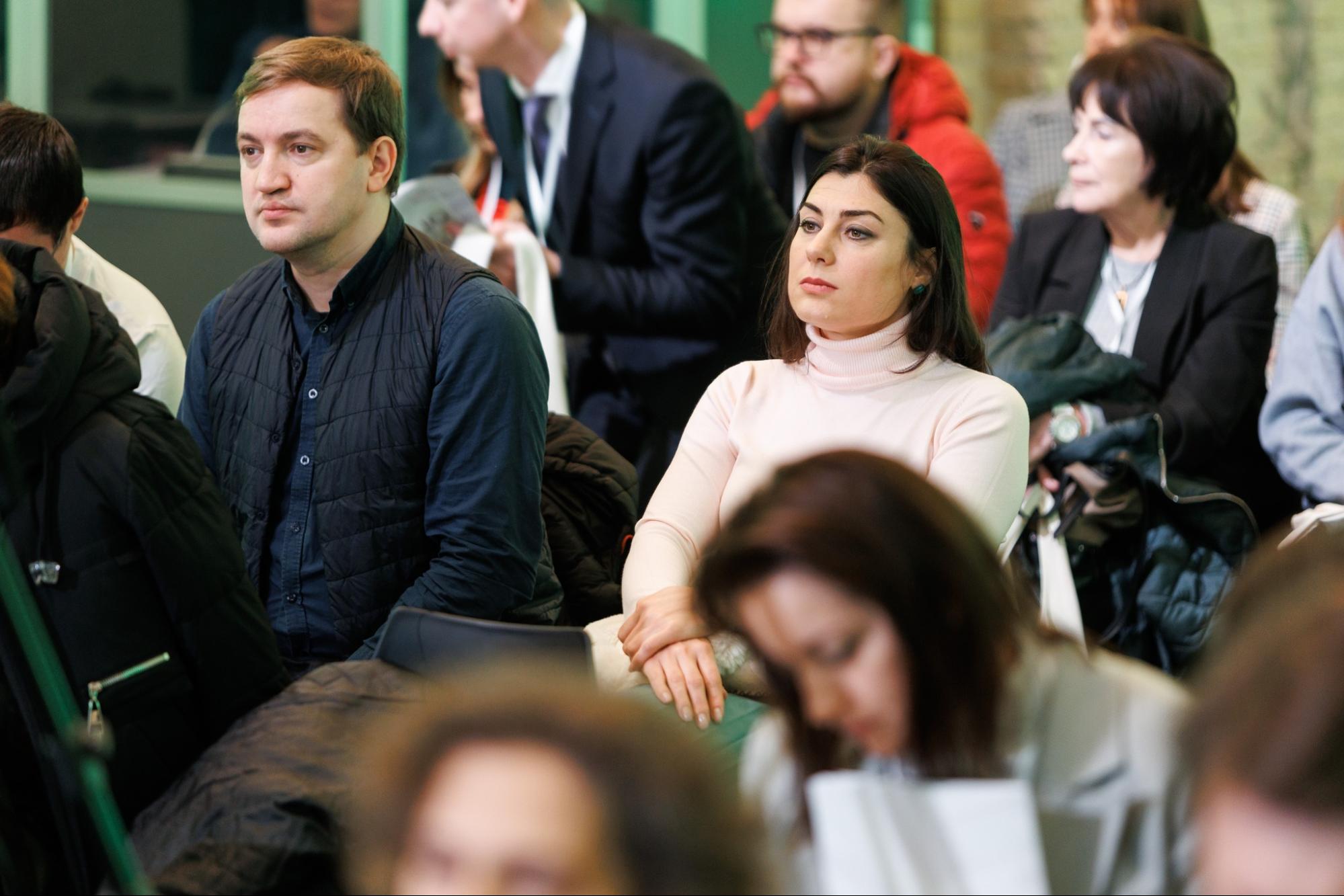
In the photo: Oleksandr Solontai — far left / Photo from the Facebook page of the organizers of the Isar Ednannia forum
Oleksandr Solontai cautions that we should not expect everyday individuals to witness the restoration project. Instead, they count on leaders to develop and present the proposal while considering the community's views.
"This will change only when the practice of planning by residents of their territories is established," Oleksandr Solontai is convinced. He stressed that the decentralization reform is ongoing, and systemic changes will take time.
Work with youth
Teenagers have already created 13 youth spaces
According to Nataliia Pishchulina, the NGO "Ukrainian Antiquity" leader, seeking out individuals in the community who inspire others to take action is essential.
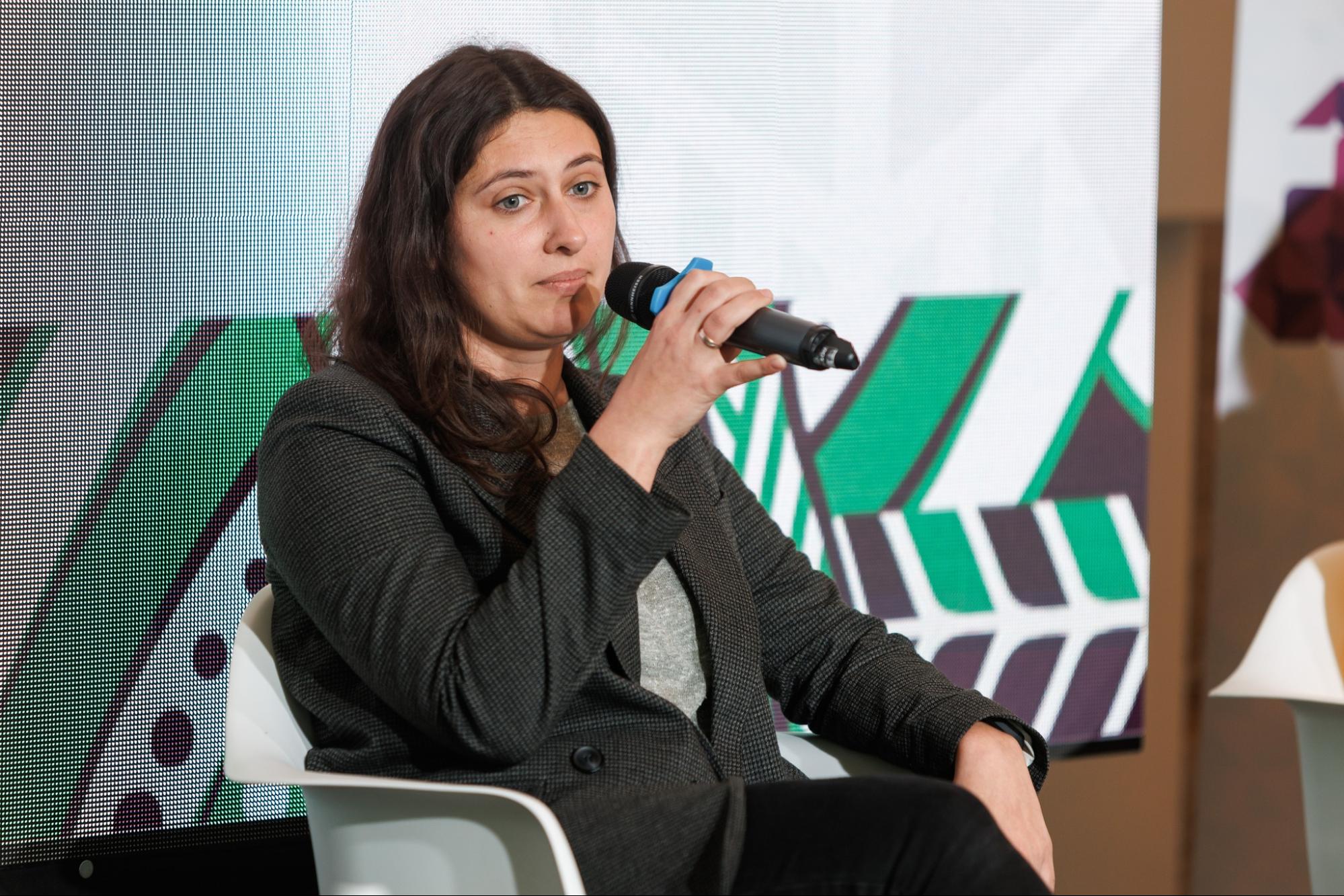
In the photo: Head of the NGO "Ukrainian Antiquity" Nataliia Pishchulina / Photo from the Facebook page of the organizers of the Isar Ednannia forum
Often, it can be young people, but unfortunately, their potential is overlooked and not involved in all communities.
Nataliia stresses the importance of engaging with school youth to encourage their desire to stay in the community and contribute to its revitalization.
Their public organization is successfully achieving this through the support of the "Join!" Program and collaboration with "Ukrainian Antiquity." Through this partnership, teenagers from various communities in three border regions have already established 13 youth spaces. These young people have taken the initiative and personally built these spaces in their communities, including those in previously occupied territories.
"We provide instruction on fundraising and project development for teenagers because these opportunities involve more than just grant funding. They also involve responsible businesses and local government bodies. As we have seen, even a small initial effort can encourage others to get involved," Nataliia Pishchulina elaborated.
Rubryka has already discussed one of these spaces earlier.
Eskhar's case: how young people opened a cinema for themselves and the whole community
One compelling instance is the establishment of a local cinema in Eskhar, a village in the Kharkiv region, by teenagers. This cinema exclusively airs Ukrainian films with full legal permission.
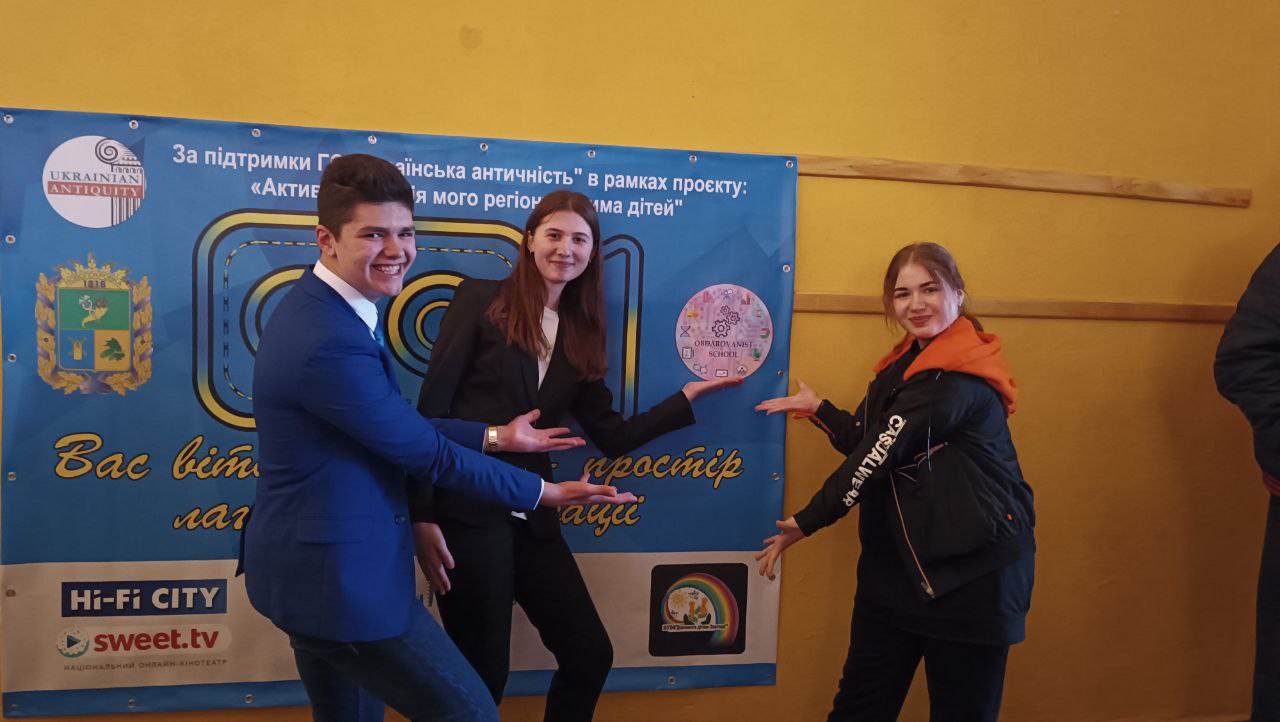
In the photo from left to right: Initiator Volodymyr Vasyliev and project team member Diana Konovalenko with a friend at the opening of the cinema in Eschar / Photo provided by Volodymyr Vasyliev
The inspiration for the youth came from "Ukrainian Antiquity," but they themselves came up with ideas on how to create a cinema that could truly be called a space.
Volodymyr Vasyliev, the student who initiated the project, confesses that he was initially just seeking an exciting experience. However, when the project received funding of 100 thousand hryvnias from the United States Agency for International Development (USAID), there was a great deal of excitement to ensure that everything was done to the highest standard.
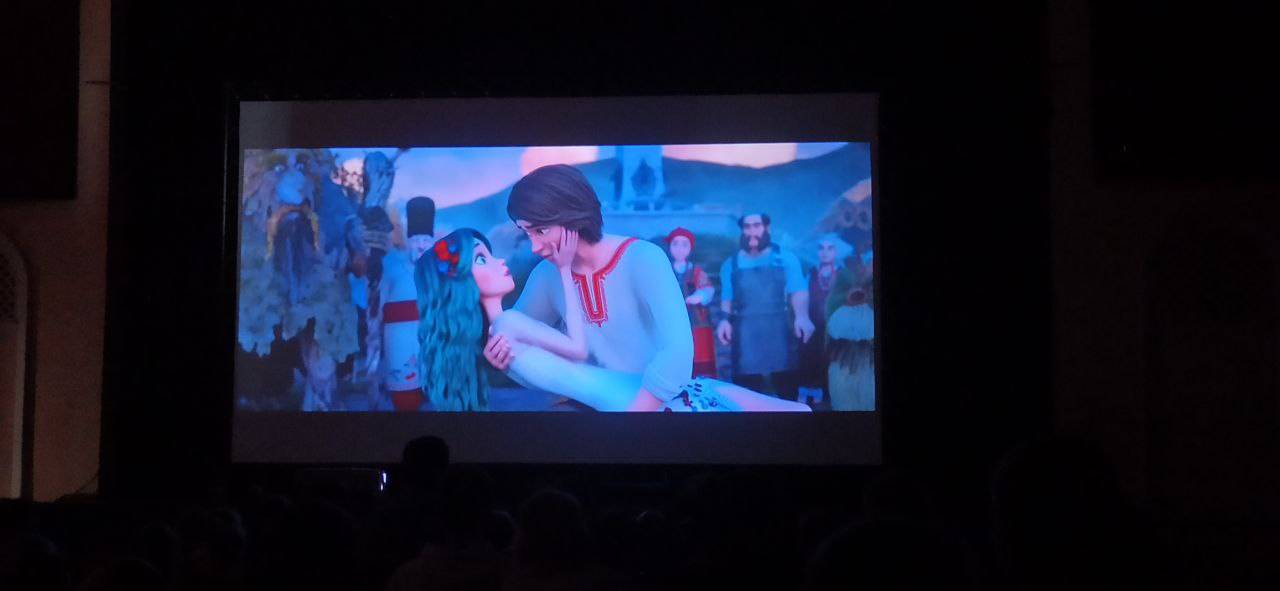
In the photo: One of the screenings at the Eskhar's cinema / Photo courtesy of Volodymyr Vasyliev
Aside from Volodymyr, the initiators' team also included Diana Konovalenko and Iryna Biziukova.
"We were thrilled to receive this funding. However, upon consulting with knowledgeable adults, we realized that the budget was allocated for a regular projector, which would not suffice for the assembly hall where we intended to set up a cinema," Volodymyr informs Rubryka.
The local authorities assisted with the community hall, speaking directly with Olena Slabinska, head of the Novopokrovsk community (which includes Eskhar village), and the department heads.
They found a person through their acquaintances who had a business dealing with home theaters. The expert assisted in selecting suitable equipment, with nearly half the budget allocated to a projector renowned for its exceptional color display. They also invested a considerable amount in a sizeable canvas to make the screen.
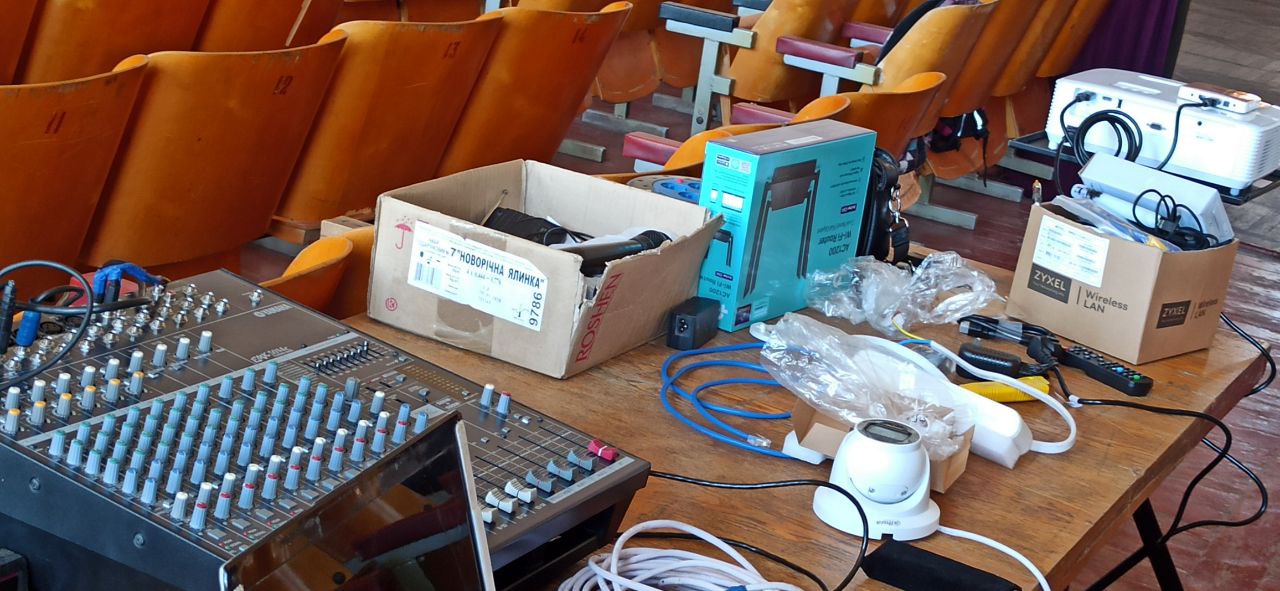
In the photo: Equipment for film broadcasts / Photo courtesy of Volodymyr Vasyliev
As funds dwindled, they called for a collection from friends and community members, Volodymyr explains. They used the donated money to purchase fabric and hired a seamstress to make curtains to darken the hall. They also had enough leftovers to commission a sign for the cinema, hoping to attract more visitors.
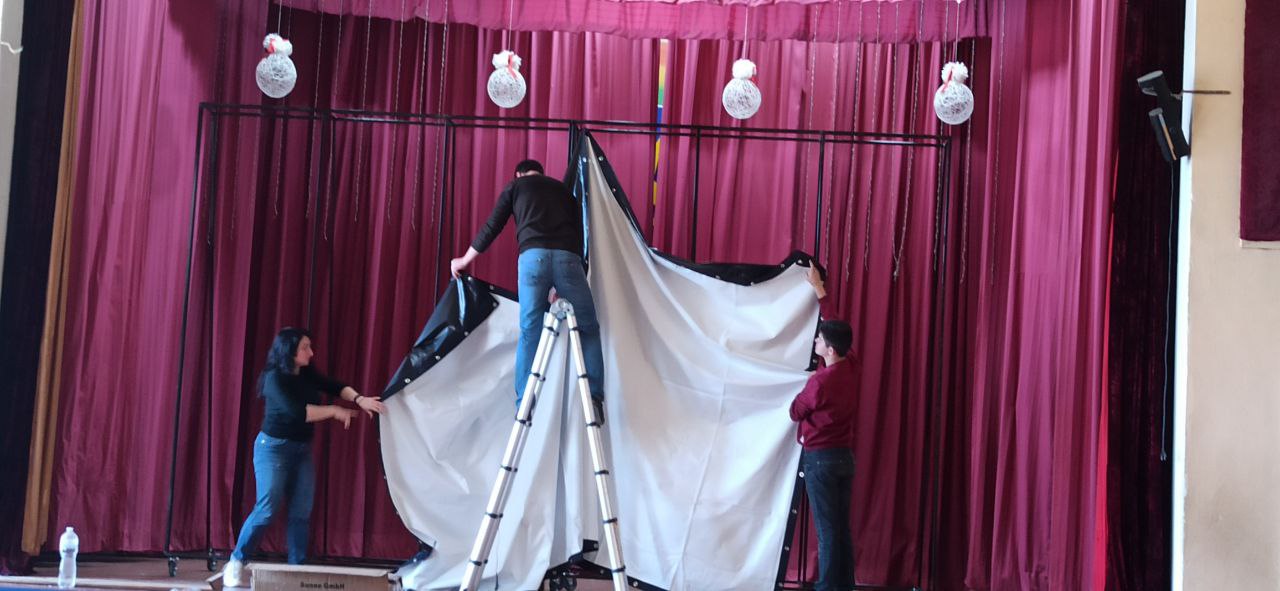
In the photo: Works on the installation of a canvas screen / Photo provided by Volodymyr Vasyliev
One of our country's top streaming services has generously offered a complimentary one-year subscription, ensuring that all content is viewed legally. In addition, a separate company has provided a free TV set-top box, accompanying cable, and a complimentary video surveillance camera.
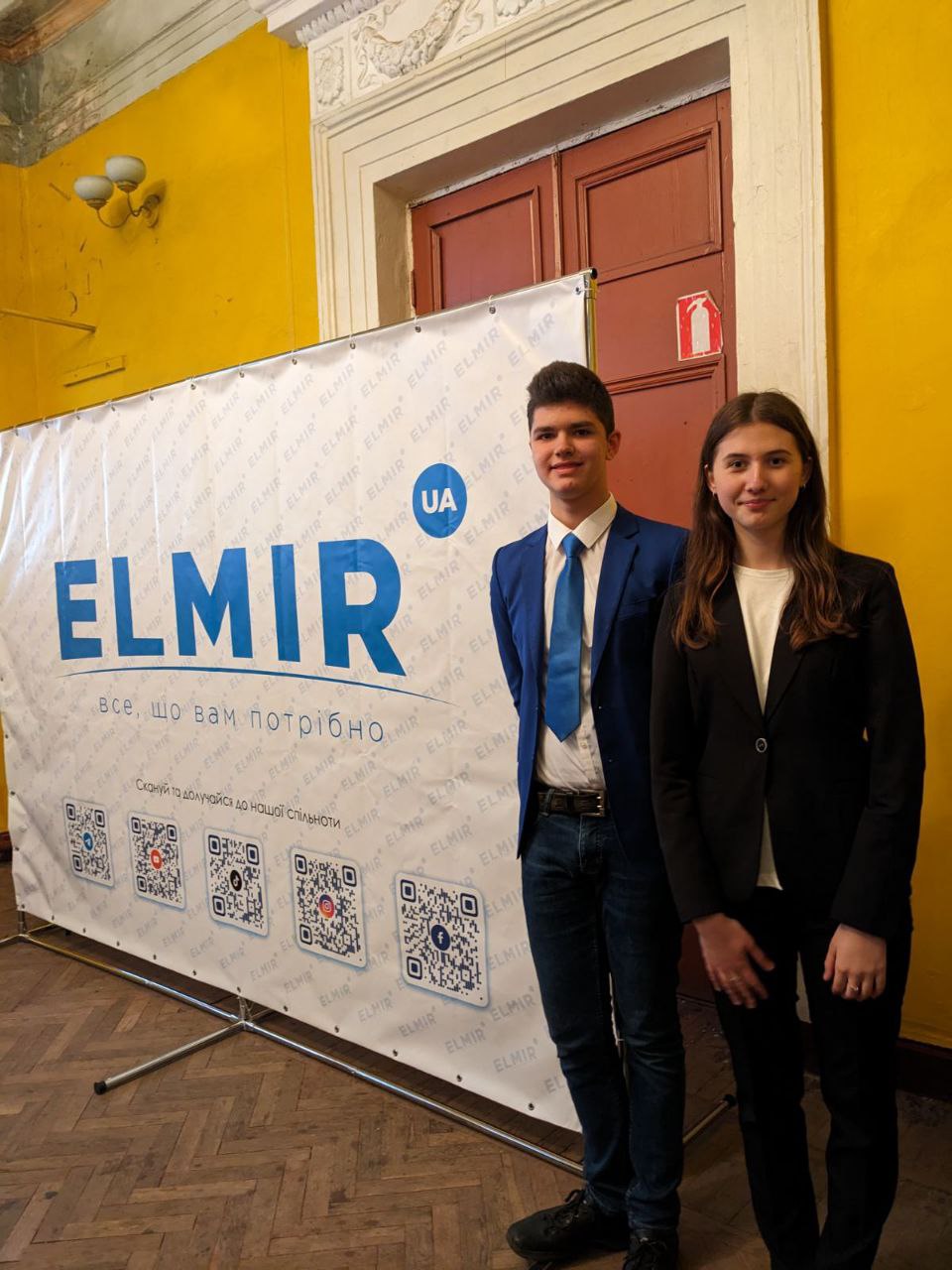
In the photo from left to right: Initiator Volodymyr Vasyliev and member of the project team Diana Konovalenko / Photo provided by Volodymyr Vasyliev
Volodymyr mentions that the screenings nowadays mostly attract mothers with children and groups of teenagers. During our conversation, the cinema was wrapping up its first season. There were heating issues in the room, and thankfully, with the help of the local authorities, a new boiler room will be installed for the cultural center. This cinema has become a unifying factor for the community.

In the photo: During one of the cinema screenings in Eskhar / Photo courtesy of Volodymyr Vasyliev
How teenagers organized Dream Room in Mena, Chernihiv region
Viktoriia Skorokhod, the president of the student council of Mina School named after Shevchenko, remembers that it all began with a competition organized by the NGO "Ukrainian Antiquity."
"We believed that having a youth space would be incredibly beneficial and essential for our institution. We lacked a space for students to gather, enjoy some tea, brainstorm innovative ideas, hold workshops, and potentially offer informal education. Despite its popularity, our school did not have anything similar," Viktoriia explains while describing the project proposal submitted for the competition.
The building in which such a space could be arranged desperately needed repairs.
"It's terrifying to think back," Viktoriia admits. "The ceiling was dripping, the tiles were in pieces, it was freezing, and no repairs were done."
At first, their team wasn't listed among the winners who received funds. However, the jury was so impressed with their project that they granted them extra funding.

In the photo: Viktoriia Skorokhod, the president of the student council of Mina School named after Shevchenko / Photo from personal archiveHowever, the teenagers sought assistance from the city council to complete the necessary repairs and purchase furniture. The Departments of Education and Economic Development and Investments even tried to accommodate their needs.
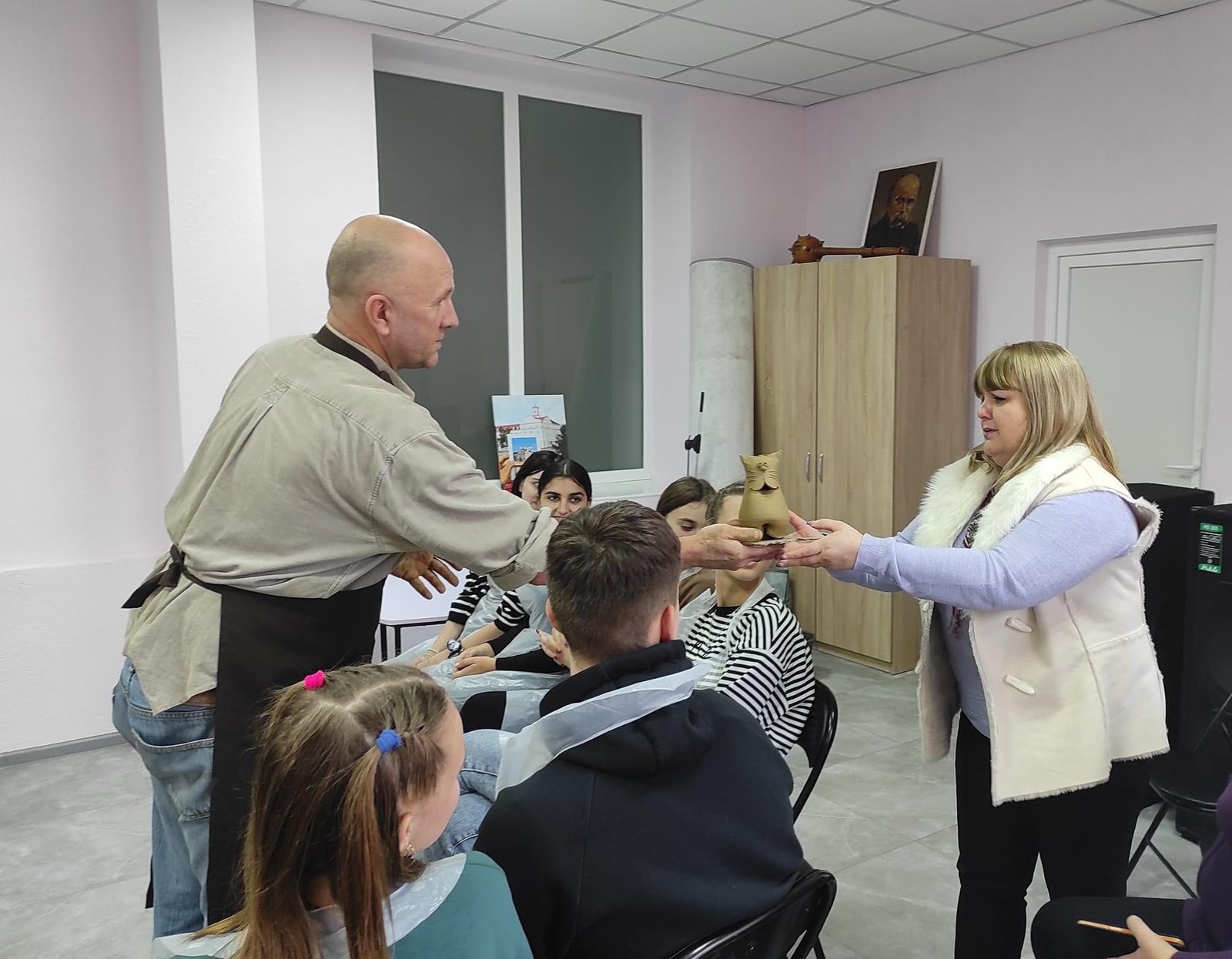
This photo features a master class taught by potter Oleh Lutsuk at "Dream Room," captured by photographer Viktoriia Skorokhod.
The "Dream Room," a youth communications and creative activities venue, opened in June of this year. It has already hosted graduation parties, preschool camps, and frequent meetings.
Viktoria brought up a few recent events, like a relaxation session led by local potter Oleh Lutsuk, a conversation with Tetiana Trotsyk, who was involved in the Revolution of Dignity, a career guidance workshop led by representatives from nearby colleges and universities, and a lesson on school volunteering. Additionally, they are preparing for the upcoming New Year celebrations and have been holding classes in available spaces since the school lacks proper facilities.

In the photo: One of the events in the youth space / Photo provided by Viktoriia Skorokhod
Meeting the needs of residents
One of the main reasons for the success of youth projects is their focus on meeting the actual needs of young members of the community. Similarly, Nataliia Pishchulina, head of the NGO "Ukrainian Antiquity," suggests that we should also consider the specific needs of other age and social groups within the community when searching for solutions.
Specifically, Nataliia Malynovska, the project manager at the "Respublika" Institute, points out the importance of examining the specific groups of people with disabilities within communities. It's important to consider that disabilities can manifest in various forms, such as sensory impairments, physical limitations, psychosocial challenges, and intellectual disabilities.
"These are four different groups, and they need four different support policies," Nataliia Malynovska explains.
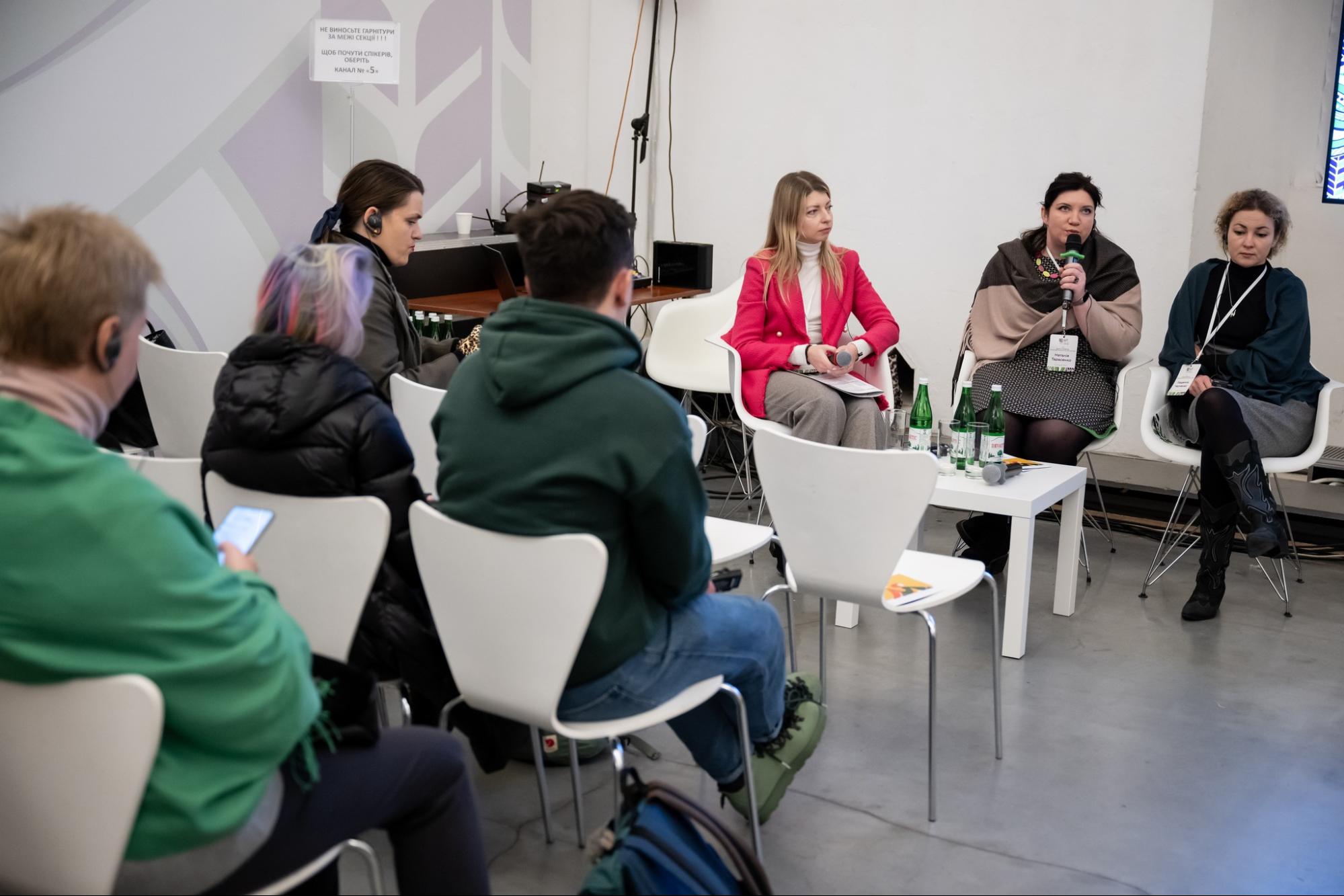
На фото: Учасники майстерні "Інструменти залучення вразливих та недостатньо представлених груп до відбудови громад" на форумі "Що дасть нам силу". Фото з фейсбук-сторінки організаторів форуму Isar Ednannia
Alina Diachenko, the project manager of the "Starenki" charity fund, emphasized the importance of viewing elderly individuals as recipients of support and valuable contributors and assets to the community.
Residents will be more motivated to participate publicly if they see that reconstruction in the community is genuinely meeting their needs.







